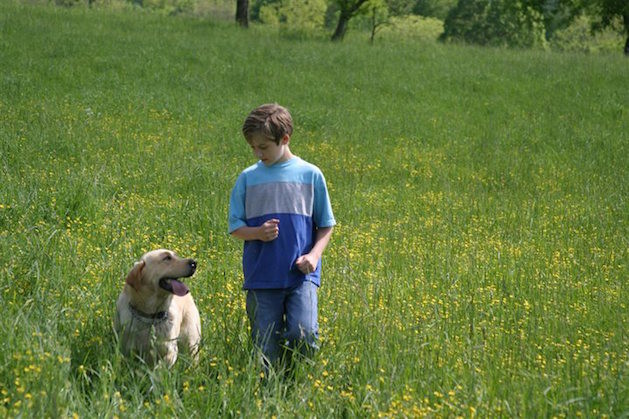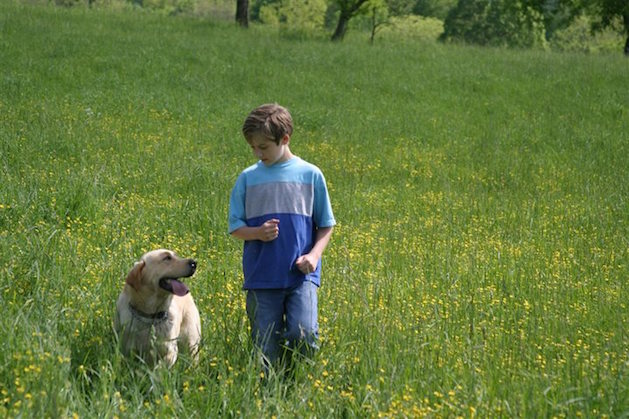
Different types of animals and breeds have different needs, but one thing is certain: when the conditions are right, most dogs and cats love the outdoors. Like their wild cousins, our fur-covered friends typically welcome the chance to spend more time with Mother Nature.
Of course, just like people, dogs and cats also get cold or overheated. They’re susceptible to bug bites, predators and poisonous plants. And depending on your community, dangers can be found in the street or a neighbor’s yard.
Still, when done responsibly, letting your pets live both indoors and outside has many advantages, including exercise, stress relief and healthier coats, according to Bethany Segrest, a pet expert with the rural lifestyle retailer, Tractor Supply Company, which hosts Pet Appreciation Week in its stores Sept. 16-20.
“There are more than 130 million domestic dogs and cats in the United States and for many of these rural and suburban pets, spending time outside is a natural and healthy part of life; however, it does mean extra care is needed to ensure their safety and well-being,” Segrest said. “Pets are family, and because of that we want to ensure they are protected and happy during their outdoor adventures, just as we would our kids.”
Your dogs and cats deserve to experience the best of both environments, which is why we’ve compiled a list of five tips to help all of your furry family members live a long and healthy life.
1. Create a safe play environment
Providing proper shelter and containment is extremely important for outdoor pets, even on mild days. PetSafe wireless containment solutions offer pet owners a great alternative to the costly installation of a permanent fence. And remember, playing outside is exhausting, so in addition to an escape-proof play area, make sure your dog has a spot with plenty of shade and lots of fresh water.
2. Does your pet have ID?
The great outdoors is an exciting place and with a little determination, your pet might succeed in exploring an area beyond your land. Help ensure their safe return by investing in a pet ID or microchip. Also consider purchasing a collar that allows your information to be directly inscribed — this will eliminate the possibility of an ID tag falling off.
3. Keep up with regular grooming
Grooming your pets frequently prevents infections, hairballs and severe hair matting. For cats and dogs who go outdoors regularly, grooming is even more crucial, as pets can get cockaburs, dirt, insects, and other outdoor elements stuck in their fur. You can even take on the task yourself with an at-home grooming kit, a purchase that will save you time and money.
4. Stay protected with the right vaccinations
Like any member of the family, it’s important to monitor the health and well-being of your animal companion. Scheduling regular visits to your veterinarian is a pivotal part of pet parenthood and can help accurately diagnose and safely treat certain health problems. Spending time outdoors means exposure to things like ticks, fleas and mosquitos. These pesky critters are known to transmit diseases like Lyme disease, tapeworm and heartworm — all fairly common and serious if left untreated. More than 800 Tractor Supply stores offer low-cost Pet Vet Clinics, which provide vaccine packages, de-worming, and other preventative treatment options that can save pet owners up to 70 percent on yearly vet bills.
5. Adjust food and water with the season
Adjusting your pet’s feeding habits can help regulate their body temperature throughout the year. Animals exposed to low temperatures should consume two to three times the amount of calories they eat at a moderate temperature. For outdoor cats and dogs, this may mean changing their present diets to include food higher in fat during winter months.
It’s vital to note that water is the single most important resource to provide your animal, especially during warmer months. Make sure your pet has access to cool, clean drinking water at all times, and remember, water can evaporate quickly in high temperatures, so it’s best to check on the amount of available water several times throughout the day. If you’re not at home, think about putting an attachment on an outdoor faucet so that your animal can get as much water as needed. Cold weather can also hinder your pet’s ability to properly hydrate. To ensure their water supply doesn’t freeze over, consider placing a heated bowl outside. A good rule to remember is that pets should consume one ounce of water per pound of body weight.
With the proper care and precautions, your pets can thrive in both outdoor and indoor environments. Visit TractorSupply.com to find more great tips, products and articles on pet care.



